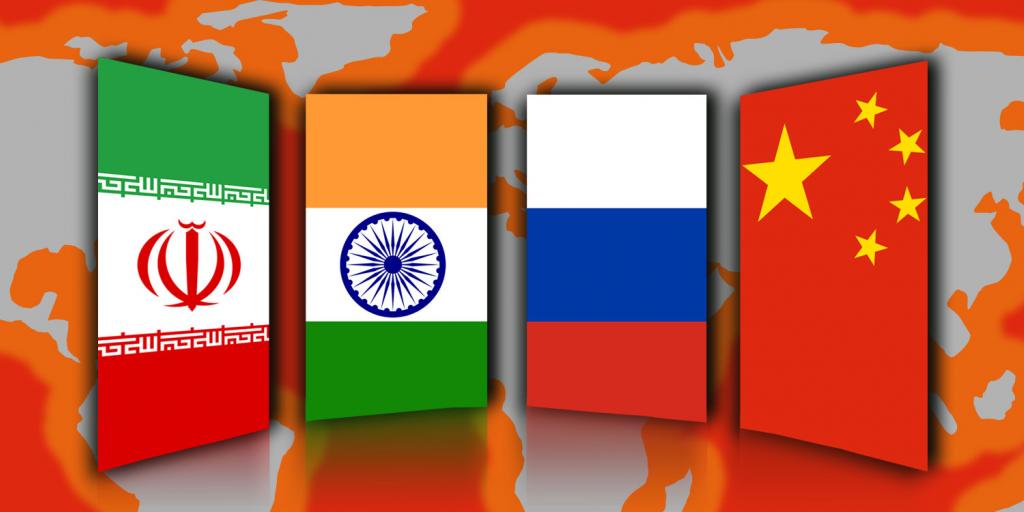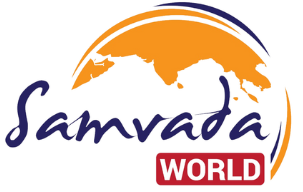
- The Russian economy has managed to persist, supported by evasion tactics and a strategic shift towards stronger economic relationships with Eastern partners.
- There is a mutual understanding between Iran and Russia, wherein Iran is assisting Russia in its war against Ukraine by providing offensive weapons.
- Russia and China’s strengthened cooperation has led to more military exercises and arms deals, signalling a deeper alignment.
- India’s relationship with Russia, built on defence and energy trade, is now becoming more important and uses this partnership to maintain its independence, balancing its relations with the West and China.
Almost two years after the invasion of Ukraine, efforts by the US and its allies to economically isolate Russia have not yielded the anticipated outcomes. The effectiveness of the imposed sanctions and export controls is being significantly diminished due to extensive evasion tactics and Russia’s deepening economic ties with China and India. Although these measures have inflicted damage, the Russian economy continues to show resilience, seemingly maintaining its capacity to support the ongoing conflict in Ukraine.
At the end of last year, Russian authorities projected a 2.8% growth in the economy, following a downturn in 2022, when the sanctions were tightened after the Ukraine invasion. An increase in defence spending and elevated oil prices have been pivotal in sustaining the economy. Russian companies have demonstrated a remarkable ability to adapt to these new economic challenges. Contrary to initial expectations of a mass exodus of Western businesses, many have opted to remain, albeit with scaled-back operations and investments, still contributing significantly to state revenues.
However, the underlying economic conditions remain problematic. High interest rates, inflation, a weakened ruble, and significant labour shortages pose ongoing challenges. The situation is further complicated by the freezing of much of Russia’s foreign reserves and the sanctioning of a large portion of its banking sector assets by Western powers. Despite these issues, the Russian economy has managed to persist, supported by evasion tactics and a strategic shift towards stronger economic relationships with Eastern partners. Research has indicated that by late 2022, Russian imports had rebounded after a steep initial decline post-invasion.
Russia’s Evasion Tactics
Russia’s strategies to circumvent sanctions, like the creation of a shadow fleet to bypass oil price caps and increasing parallel imports, have provided temporary relief, as Estimates vary, but S&P Global and the Kyiv School of Economics Institute have put the number at over 400 ships that can transport oil or products made from crude such as diesel fuel and gasoline. While Russia has been able to secure vital imports through non-sanctioned countries like Turkey, Kazakhstan, and the UAE, this reliance on external actors could lead to vulnerabilities. Over time, these strategies may face greater resistance from international partners, especially as Western countries increase pressure on nations facilitating these loopholes. Additionally, continued reliance on such workarounds could undermine Russia’s economic autonomy and limit access to high-quality or advanced products, potentially stunting its economic growth and technological development.
To sustain its economy under sanctions, Russia can Focus on boosting domestic industries and innovation in tech and manufacturing would help lessen dependency on imports. Building reserves of essential resources and expanding alternative financial systems like the MIR payment network could provide stability. Working more closely with regional partners, such as the Eurasian Economic Union, would help avoid Western economic pressure. Russia could also aim for self-sufficiency in critical goods and work on diversifying its economy away from oil and gas, focusing more on sectors like agriculture and technology for long-term resilience.
Challenges for West
Western countries face a range of ethical and legal challenges when trying to curb Russia’s sanctions evasion tactics. Legally, enforcing sanctions outside their borders is complicated, especially when dealing with countries like China, India, and Turkey that continue trading with Russia. These nations often argue that they are within their rights to engage in trade, challenging the Western powers’ extraterritorial sanctions. The difficulty lies in navigating international trade laws and balancing the sanctions with the legal frameworks of other countries.
From an ethical standpoint, the sanctions often affect ordinary people more than the political elites they aim to target. For instance, sanctions on Russian energy exports may hurt citizens in Russia but also raise energy prices and fuel shortages in Europe, and this further becomes challenging as the majority of European countries mainly Germany are greatly dependent on Russian energy. Additionally, enforcing strict measures may inadvertently damage developing economies that rely on Russian exports or partnerships, raising questions about the fairness of punitive actions.
Further complicating matters, Western countries are hesitant to put too much pressure on strategic partners like China and India. These countries, while not supporting Russia’s actions, are vital players in global trade and geopolitics. Putting excessive pressure on them could have broader diplomatic consequences, affecting other international relationships.
Even before the conflict, Russia had been pivoting its economic focus eastward, a move expedited by the invasion. Cooperative trade and investment partners like China and India have remained engaged, undeterred by the sanctions. Trade with China surged by almost 30%, surpassing $200 billion in the first 11 months of the previous year, with Chinese exports to Russia increasing by 50%. In 2023, half of Russia’s oil exports were directed to China, with 40% going to India. Bilateral trade between Russia and India doubled to over $50 billion in the first ten months of that year.
Significance of Russia’s ties with India, China and Iran
The growing ties between Russia, China, and India are changing the global security landscape. Russia and China’s strengthened cooperation has led to more military exercises and arms deals, signalling a deeper alignment. This partnership could challenge U.S. influence, especially in areas like Eurasia, where Russia’s involvement benefits China’s Belt and Road Initiative. On the other hand, India’s relationship with Russia, built on defence and energy trade, is now becoming more important. India uses this partnership to maintain its independence, balancing its relations with the West and China. This shift in alliances is making the global security environment more complex, with new challenges for both regional and global stability.
Russia, India, and China are also linked because, following the Ukrainian war, all the total European relations with Russia have come to a stall, and the Europeans have deserted their economy. Due to this situation, Russia has had to resort to Asian nations for their connections, and the big two in Asia are China and India. This relationship is important, but it would not be entirely wrong to say that the Russia-China relationship is more strategic as opposed to the India-Russia relationship. This is because President Xi Jinping of China and President Vladimir Putin of Russia share common values on the need to challenge Western dominance, which brings them closer together. China has been filling the economic void that Russia lost to the West by heavily investing in Russia. Both are working toward a common goal. In contrast, India has a special privileged partnership with Russia, but India’s foreign policy at present does not allow it to fully abandon the West in favour of Russia. It’s at a crucial juncture, and so India needs to balance its relationships with both the West and Russia.
Russia is also interested in another Asian country, Iran, and their relationship is also strategic. There is a mutual understanding between Iran and Russia, wherein Iran is assisting Russia in its war against Ukraine by providing offensive weapons. One of the most significant weapons Iran has supplied is the Shaheed drones. In addition, Iran has provided ballistic missiles to Russia. In return, Russia is willing to provide strategic nuclear assistance to Iran to aid with its nuclear proliferation ambitions. Furthermore, both states are considering other investment opportunities in one another’s market.
Impact on Iran
With Trump back in office, we can expect a return to the tough stance he took on Iran during his first term. He’s likely to continue applying heavy sanctions and pressure on Iran, especially around its nuclear program and influence in the Middle East. His administration would probably stay away from rejoining the 2015 nuclear deal, and might even push for something new, but on far stricter terms. There could also be more military tensions as he works to limit Iran’s reach in countries like Syria and Yemen. At the same time, Trump might still be open to talks, but only if Iran agrees to tougher conditions. The overall atmosphere would likely be one of increased pressure, with the potential for moments of direct negotiation.
President Trump stated his desire to end the war, and there is also willingness from Russia to engage in talks with the U.S. if the war were to settle. For Russia, a resolution to the war would be beneficial. However, Russia must be cautious about President Trump’s ambitions. Trump believes that the strategic ties developing between Russia, Iran, and China should be dismantled, as he sees this alliance as a threat to American interests. He advocates for Russia not to maintain such relationships. Meanwhile, President Putin is clear that he wants the war to end on terms that prevent Ukraine from joining NATO, whereas Trump is considering a cooling-off period where Ukraine may not be allowed to join NATO for at least the next 20 years, and perhaps after that, they might be allowed to.
References:
- “Putin and Xi Stick Together in Video Call After Trump’s Inauguration,” The Wall Street Journal, accessed January 25, 2025
- “OPEC’s Share in India’s Annual Oil Imports Rises After 8-Year Drop,” Reuters, January 17, 2025
- “A Deep Dive into the India-Russia Economic Relations,” Observer Research Foundation, accessed January 25, 2025.
- “Russia-Iran: A Strategic Partnership amidst Sanctions and the War in Ukraine,” Foreign Policy, January 17, 2025.
Satish Chogule is pursuing a Masters in Political Science at the University of Kolhapur, Maharashtra. He has contributed to several online platforms on international affairs and global developments. Views expressed are the author’s own.
